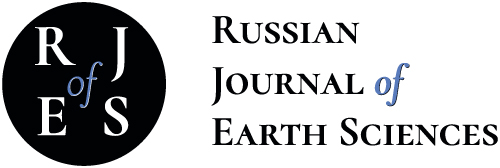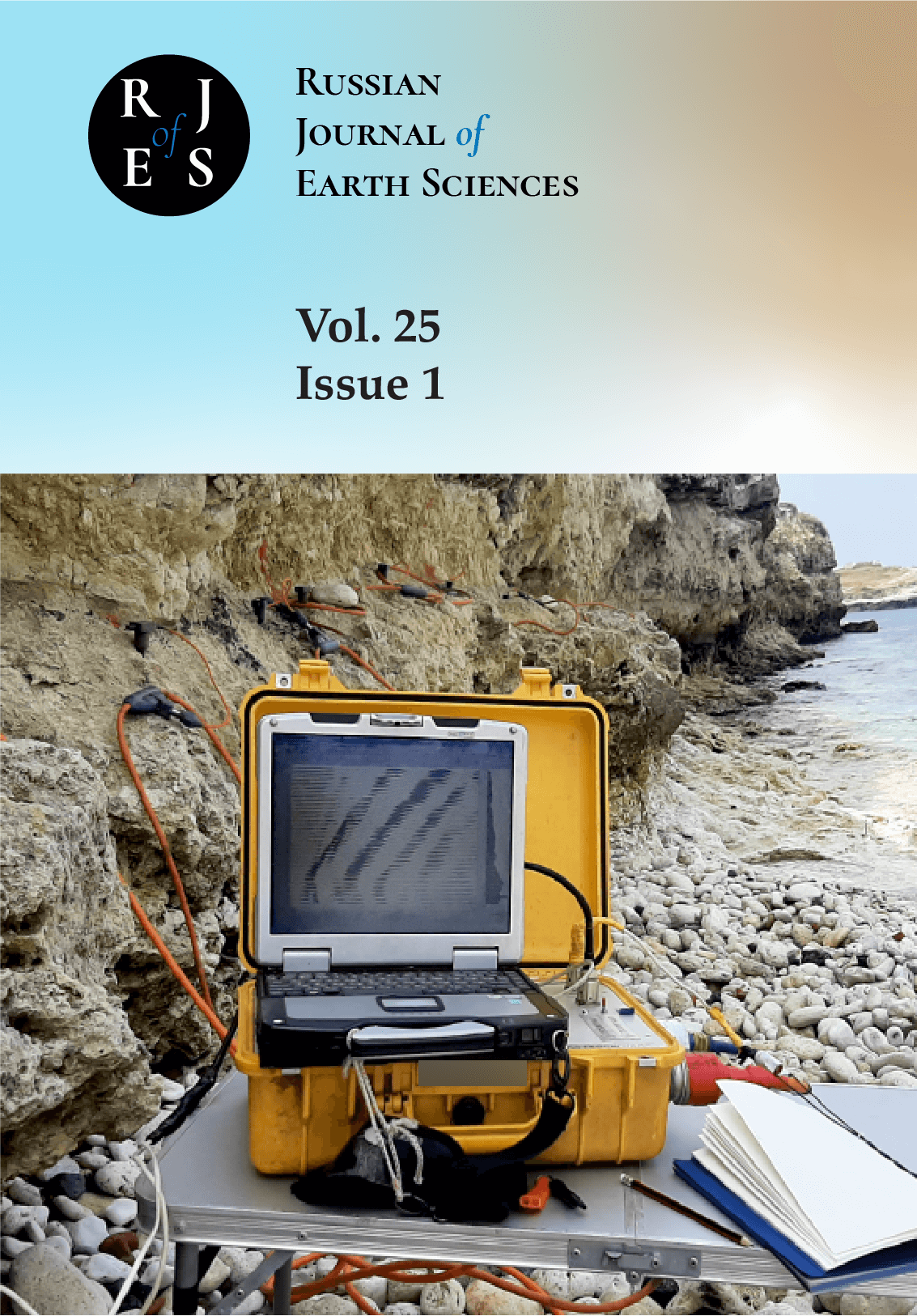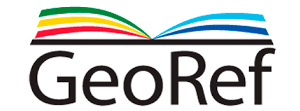Kabul Polytechnic University (Department of Geology and Exploration of Minerals Deposits)
Saint Petresburg, St. Petersburg, Russian Federation
UDC 55
UDC 550.34
UDC 550.383
CSCSTI 37.01
CSCSTI 37.15
CSCSTI 37.25
CSCSTI 37.31
CSCSTI 38.01
CSCSTI 36.00
CSCSTI 37.00
CSCSTI 38.00
CSCSTI 39.00
CSCSTI 52.00
Russian Classification of Professions by Education 05.00.00
Russian Library and Bibliographic Classification 26
Russian Trade and Bibliographic Classification 63
BISAC SCI SCIENCE
Rare-metal pegmatites containing industrial concentrations of lithium, tantalum, niobium, cesium, beryllium, and tin are becoming increasingly important as raw material objects for the production of electrical equipment, batteries, and electronics. In this context, studying the patterns of their geological and structural setting is highly relevant, as it allows the identification of prospecting criteria to discover new resource-bearing sites and expand the reserves of known rare-metal pegmatite deposits in the Nuristan zone of northeastern Afghanistan. Here, pegmatite fields are spatially associated with the Oligocene granites of the Laghman complex and are located in the provinces of Afghanistan: Nuristan, Kunar, Laghman, Kabul, Nangarhar, Kapisa, Panjshir, and Badakhshan. They have been known since ancient times as sources of gemstones and mica. The Laghman granitoid complex is characterized by the sequential intrusion of three intrusive phases: 1 – diorites, quartz diorites, granodiorites, and plagiogranites; 2 – porphyritic biotite granites, amphibolebiotite granites, and granodiorites; 3 – two mica and biotite granites, granite porphyries, aplite, and pegmatoid granites. Rare-metal pegmatites are confined to the third phase of the Laghman granite intrusion. Here, granites are characterized by heterogeneous texture, from granoblastic to granitic, with fragments of aplitic and poikilitic texture. The host rocks of pegmatites are Triassic phyllite-like quartz-mica schists and Proterozoic gneisses and quartzites. Additionally, pegmatites are found within intrusive rocks, specifically within gabbro-diorites massifs of the Nilaw complex. The morphology of the bodies of rare-metal pegmatites is diverse. Veins with swells and plate-like bodies predominate, while lens-shaped forms and irregularly oriented veins are less common. The thickness of pegmatite veins ranges from 1 to 60 m, and their length varies from tens of meters to 2–5 km. It is assumed that the formation of the Laghman granitoid complex is a consequence of the collision of the Indian continent with Eurasia.
Rare-metal pegmatites, geologic structure, Tectonic, spodumene, granitoid, granite, diorite, Nuristan, Afghanistan
1. Abdullah Sh., Chmyrev V. M., Dronov V. I. Geology and Mineral Resources of Afghanistan, Vol. 1 - Geology. — Moscow : Nedra, 1980. — (In Russian).
2. Abdullah Sh., Chmyriov V. M., Dronov V. Geology and mineral resources of Afghanistan. 2nd ed. — London : British Geological Survey, 2008. DOI: https://doi.org/10.31857/S0869605520050020; EDN: https://elibrary.ru/IJYLTJ
3. Akbarpuran Kh. S., Gul’bin Yu. L., Sirotkin A. N., et al. Evolution of the composition of accessory minerals REE and Ti in metamorphic schists of the Atomfjella Series, Western Ny Friesland // Zapiski RMO (Proceedings of the Russian Mineralogical Society). — 2020. — Vol. 149, no. 5. — P. 1–28. — (In Russian). DOI: https://doi.org/10.31897/PMI.2021.2.1; EDN: https://elibrary.ru/SFFKKA
4. Alekseev R. S., Rebetsky Yu. L. A model of the evolution of the lithosphere of the Himalayan-Tibetan orogen // Vestnik Kamchatskoy regional’noy assotsiatsii «Uchebno-nauchnyy tsentr». Seriya: Nauki o Zemle. — 2021. — Vol. 4, no. 52. — P. 89–107. — DOI:https://doi.org/10.31431/1816-5524-2021-4-52-89-107. — (In Russian). DOI: https://doi.org/10.31897/PMI.2022.21; EDN: https://elibrary.ru/UNBBPS
5. Alekseev V. I. Tectonic and magmatic factors of Li-F granites localization of the East of Russia // Journal of Mining Institute. — 2021. — Vol. 248. — P. 173–179. — DOI:https://doi.org/10.31897/PMI.2021.2.1. — (In Russian). DOI: https://doi.org/10.31431/1816-5524-2021-4-52-89-107; EDN: https://elibrary.ru/EHJUOL
6. Alekseev V. I. Type intrusive series of the Far East belt of lithium-fluoric granites and its ore content // Journal of Mining Institute. — 2022. — Vol. 255, no. 3. — P. 377–392. — DOI:https://doi.org/10.31897/PMI.2022.21. — (In Russian). EDN: https://elibrary.ru/QLIKLX
7. Beskin S. M., Marin Y. B. Geodynamic types of rare-metal granite magmatism and associated ore deposits // Journal of Mining Institute. — 2013. — No. 200. — P. 155–162. — (In Russian). DOI: https://doi.org/10.30695/zrmo/2019.1484.00; EDN: https://elibrary.ru/LTMTDM
8. Beskin S. M., Marin Yu. B. Pecularites of granite sistems including rare-metal pegmatites // Zapiski RMO (Proceedings of the Russian Mineralogical Society). — 2019. — Vol. 148, no. 4. — P. 1–16. — DOI:https://doi.org/10.30695/zrmo/2019.1484.00. — (In Russian). DOI: https://doi.org/10.7868/S0016853X13010025; EDN: https://elibrary.ru/PNQPUZ
9. Bibienne T., Magnan J.-F., Rupp A., et al. From Mine to Mind and Mobiles: Society’s Increasing Dependence on Lithium // Elements. — 2020. — Vol. 16, no. 4. — P. 265–270. — DOI:https://doi.org/10.2138/gselements.16.4.265.
10. Burtman V. S. Geodynamics of the Pamir-Punjab Syntaxis // Geotectonics. — 2013. — Vol. 2013, no. 1. — P. 36–58. — DOI:https://doi.org/10.7868/s0016853x13010025. — (In Russian). DOI: https://doi.org/10.35597/2313-545X-2021-7-3-2; EDN: https://elibrary.ru/VYDQYF
11. Cardoso-Fernandes J., Rodrigues C., Lima A., et al. Spectrometry Analysis Techniques for LCT Pegmatite Halo Identification: The Role of European Projects // IGARSS 2022 - 2022 IEEE International Geoscience and Remote Sensing Symposium. — IEEE, 2022. — P. 6436–6439. — DOI:https://doi.org/10.1109/IGARSS46834.2022.9883663.
12. Černý P., Ercit T. S. The classification of granitic pegmatites revisited // The Canadian Mineralogist. — 2005. — Vol. 43. — P. 2005–2026. DOI: https://doi.org/10.15372/GiG201400207; EDN: https://elibrary.ru/SMXAGF
13. Chen L., Zhang N., Zhao T., et al. Lithium-Bearing Pegmatite Identification, Based on Spectral Analysis and Machine Learning: A Case Study of the Dahongliutan Area, NW China // Remote Sensing. — 2023. — Vol. 15, no. 2. — P. 493. — DOI:https://doi.org/10.3390/rs15020493.
14. Cocker M. D. Chapter 24A. Summary for the Mineral Information Packagefor the Nuristan Rare-Metal Pegmatite Area of Interest // Summaries of Important Areas for Mineral Investment and Production Opportunities of Nonfuel Minerals in Afghanistan. — U.S. Geological Survey, 2011. — P. 1630–1653. DOI: https://doi.org/10.2205/2024ES000916; EDN: https://elibrary.ru/PRIEFZ
15. Deng J., Li J., Zhang D., et al. Origin of pegmatitic melts from granitic magmas in the formation of the Jiajika lithium deposit in the eastern Tibetan Plateau // Journal of Asian Earth Sciences. — 2022. — Vol. 229. — P. 105147. — DOI:https://doi.org/10.1016/j.jseaes.2022.105147. DOI: https://doi.org/10.24930/1681-9004-2018-18-1-082-098; EDN: https://elibrary.ru/YTBOHH
16. Doebrich J. L., Wahl R. R., Chirico P. G., et al. Geologic and mineral resource map of Afghanistan. Scale 1 : 850,000. — U. S. Geological Survey, 2006. DOI: https://doi.org/10.31241/FNS.2020.17.071; EDN: https://elibrary.ru/WUEEWB
17. Egorov A. S., Prischepa O. M., Nefedov Y. V., et al. Deep Structure, Tectonics and Petroleum Potential of the Western Sector of the Russian Arctic // Journal of Marine Science and Engineering. — 2021. — Vol. 9, no. 3. — P. 258. — DOI:https://doi.org/10.3390/jmse9030258.
18. Fersman A. E., Ginzburg A. I. Pegmatites of the USSR. Volume 1. — Moscow-Leningrad : USSR Academy of Science, 1936. — (In Russian). EDN: https://elibrary.ru/MYUYUL
19. Gavrilchik A. K., Skublov S. G., Kotova E. L. Features of trace element composition of beryl from the Uralian Izumrudnye kopi // Mineralogiya. — 2021. — P. 32–47. — DOI:https://doi.org/10.35597/2313-545x-2021-7-3-2. — (In Russian). DOI: https://doi.org/10.5800/GT-2014-5-1-0127; EDN: https://elibrary.ru/SFQYXN
20. Gavrilchik A. K., Skublov S. G., Kotova E. L. Trace Element Composition of Beryl From the Sherlovaya Gora Deposit, Southeastern Transbaikal Region, Russia // Geology of Ore Deposits. — 2022. — Vol. 64, no. 7. — P. 442–451. — DOI:https://doi.org/10.1134/S1075701522070054.
21. Ghasemi Siani M., Mehrabi B., Bayat S., et al. Geochronology, geochemistry and mineral chemistry of Malayer-BoroujerdShazand pegmatite dikes, Sanandaj-Sirjan zone, NW Iran // International Journal of Earth Sciences. — 2021. — Vol. 110, no. 4. — P. 1139–1167. — DOI:https://doi.org/10.1007/s00531-021-02009-9. EDN: https://elibrary.ru/JXTFMB
22. Ginzburg A. I., Timofeev I. N., Fel’dman L. G. Fundamentals of the geology of granite pegmatites. — Moscow : Nedra, 1979. — (In Russian).
23. Gourcerol B., Gloaguen E., Melleton J., et al. Re-assessing the European lithium resource potential - A review of hard-rock resources and metallogeny // Ore Geology Reviews. — 2019. — Vol. 109. — P. 494–519. — DOI:https://doi.org/10.1016/j.oregeorev.2019.04.015. DOI: https://doi.org/10.35597/2313-545X-2020-6-2-7; EDN: https://elibrary.ru/YYNMCD
24. Gvozdenko T. A., Baksheev I. A., Khanin D. A., et al. Iron-bearing to iron-rich tourmalines from granitic pegmatites of the Murzinka pluton, Central Urals, Russia // Mineralogical Magazine. — 2022. — Vol. 86, no. 6. — P. 948–965. — DOI:https://doi.org/10.1180/mgm.2022.104.
25. Hanson S. L. A Tectonic Evaluation of Pegmatite Parent Granites // The Canadian Mineralogist. — 2016. — Vol. 54, no. 4. — P. 917–933. — DOI:https://doi.org/10.3749/canmin.1600010.
26. Hayden H. H. The geology of northern Afghanistan. — Calcutta, India : Off. of the Geol. Survey of India, 1911.
27. Jonsson E. Pegmatite-hosted lithium mineralisation in Sweden: an overview // Lithium 200 years. Mineralogical Society of Sweden. — Mineralogical Society of Sweden, 2018. — P. 12–15.
28. Kavanagh L., Keohane J., Garcia Cabellos G., et al. Global Lithium Sources-Industrial Use and Future in the Electric Vehicle Industry: A Review // Resources. — 2018. — Vol. 7, no. 3. — P. 57. — DOI:https://doi.org/10.3390/resources7030057. DOI: https://doi.org/10.31857/S0869-5652486169-73; EDN: https://elibrary.ru/XVVPQA
29. Knoll T., Huet B., Schuster R., et al. Lithium pegmatite of anatectic origin - A case study from the Austroalpine Unit Pegmatite Province (Eastern European Alps): Geological data and geochemical modeling // Ore Geology Reviews. — 2023. — Vol. 154. — P. 105298. — DOI:https://doi.org/10.1016/j.oregeorev.2023.105298. DOI: https://doi.org/10.31857/S0016853X21030085; EDN: https://elibrary.ru/ZEPKQS
30. Koopmans L., Martins T., Linnen R., et al. The formation of lithium-rich pegmatites through multi-stage melting // Geology. — 2023. — Vol. 52, no. 1. — P. 7–11. — DOI:https://doi.org/10.1130/G51633.1.
31. Kuznetsova L. G., Shokalsky S. P., Sergeev S. A., et al. Age and composition of the early paleozoic magmatic associations and related rare-element pegmatites in the south-eastern part of the Sangilen block, Tuva-Mongolian massif // Geodynamics & Tectonophysics. — 2021. — Vol. 12, no. 2. — P. 261–286. — DOI:https://doi.org/10.5800/GT-2021-12-2-0524. EDN: https://elibrary.ru/RQAXAN
32. Labuntsov A. N. Geological and mineralogical explorations in the Western Pamirs in Badakhshan Province, Afghanistan in 1928 // Pamir expedition. 1928. Expedition works. Issue IV. Mineralogy. — Leningrad : USSR Academy of Sciences, 1930. — (In Russian).
33. Levashova E., Skublov S., Hamdard N., et al. Geochemistry of Zircon from Pegmatite-bearing Leucogranites of the Laghman Complex, Nuristan Province, Afghanistan // Russian Journal of Earth Sciences. — 2024. — P. 1–13. — DOI:https://doi.org/10.2205/2024ES000916. — (In Russian). DOI: https://doi.org/10.2138/gselements.16.4.265; EDN: https://elibrary.ru/ZBCVHY
34. Liu T., Wang H., Tian Sh., et al. Genesis of the Jiajika superlarge lithium deposit, Sichuan, China: constraints from HeAr-H-O isotopes // Acta Geochimica. — 2023. — Vol. 42, no. 3. — P. 517–534. — DOI:https://doi.org/10.1007/s11631-023-00593-y.
35. London D., Burt D. M. Chemical models for lithium aluminosilicate stabilities in pegmatites and granites // American Mineralogist. — 1982. — Vol. 67, no. 5/6. — P. 494–509. DOI: https://doi.org/10.2113/gscanmin.43.6.2005; EDN: https://elibrary.ru/XUIWIO
36. Machevariani M. M., Alekseenko A. V., Bech J. Complex Characteristic of Zircon from Granitoids of the Verkhneurmiysky Massif (Amur Region) // Minerals. — 2021. — Vol. 11, no. 1. — P. 86. — DOI:https://doi.org/10.3390/min11010086. DOI: https://doi.org/10.3390/rs15020493; EDN: https://elibrary.ru/NAEGCO
37. Mashkoor R., Ahmadi H., Rahmani A. B., et al. Detecting Li-bearing pegmatites using geospatial technology: the case of SW Konar Province, Eastern Afghanistan // Geocarto International. — 2022. — Vol. 37, no. 26. — P. 14105–14126. — DOI:https://doi.org/10.1080/10106049.2022.2086633.
38. Morozova L. N. Lithium Kolmozero deposit of rare metal pegmatites: New data on rare element composition (Kola Peninsula) // Litosfera. — 2018. — Vol. 18, no. 1. — P. 82–98. — DOI:https://doi.org/10.24930/1681-9004-2018-18-1-082-098. — (In Russian). DOI: https://doi.org/10.1016/j.jseaes.2022.105147; EDN: https://elibrary.ru/EXSPVW
39. Morozova L. N., Serov P. A., Kunakkuzin E. L., et al. Kola rare-metal pegmatite belt: main features of geological structure // Trudy Fersmanovskoi Nauchnoi Sessii GI KNTs RAN. — 2020a. — Vol. 17. — P. 374–378. — DOI:https://doi.org/10.31241/FNS.2020.17.071. — (In Russian).
40. Morozova L. N., Sokolova E. N., Smirnov S. Z., et al. Spodumene from rare-metal pegmatites of the Kolmozero lithium world-class deposit on the Fennoscandian shield: trace elements and crystal-rich fluid inclusions // Mineralogical Magazine. — 2020b. — Vol. 85, no. 2. — P. 149–160. — DOI:https://doi.org/10.1180/mgm.2020.104. DOI: https://doi.org/10.3390/jmse9030258; EDN: https://elibrary.ru/ZRHHUV
41. Mosazai A. M., Ahmadi H., Yousufi A. The Zoning Structure of the Rare - Metal Pegmatites of Afghanistan // The 36th National and the 3rd International Geosciences Congress. — Tehran, Iran : Iran Geological Survey, 2018. — P. 1–8. DOI: https://doi.org/10.1134/s1075701522070054; EDN: https://elibrary.ru/OHEHJS
42. Mosazai A. M., Yousufi A., Ahmadi H. The geological characteristics and economical importance of pegmatite belt of Afghanistan // Geologia i okhrana nedr. — 2017. — Vol. 65, no. 4. — P. 26–33. DOI: https://doi.org/10.1007/s00531-021-02009-9; EDN: https://elibrary.ru/GJOOZC
43. Müller A., Reimer W., Wall F., et al. GREENPEG - exploration for pegmatite minerals to feed the energy transition: first steps towards the Green Stone Age // Geological Society, London, Special Publications. — 2022. — Vol. 526, no. 1. — P. 193–218. — DOI:https://doi.org/10.1144/sp526-2021-189. DOI: https://doi.org/10.1016/j.oregeorev.2019.04.015; EDN: https://elibrary.ru/JLHAEL
44. Müller A., Simmons W., Beurlen H., et al. A proposed new mineralogical classification system for granitic pegmatites - Part I: History and the need for a new classification // The Canadian Mineralogist. — 2018. — Vol. 60, no. 2. — P. 203–227. — DOI:https://doi.org/10.3749/canmin.1700088. DOI: https://doi.org/10.1180/mgm.2022.104; EDN: https://elibrary.ru/FIJVBE
45. Musazai A. M. Mineral types, zoning, and genetic features of Cenozoic rare-metal pegmatites of the Afghan Pegmatite Belt. Avtoref. dis. ... kand. geol.-mineral. nauk. — Moscow : Moscow State University, 1988. — (In Russian).
46. Ogorodnikov V. N., Polenov Yu. A., Kisin A. Yu., et al. Granite pegmatites and pegmatoids of the Urals. — Ekaterinburg : UrB RAS, 2020. — (In Russian).
47. Orris G. J., Bliss J. D. Mines and Mineral Occurrences of Afghanistan. — Tucson, Arizona : U.S. Geological Survey, 2002. DOI: https://doi.org/10.3133/ofr02110
48. Peters S. G., Ludington S., Orris G. J., et al. Preliminary non-fuel mineral resource assessment of Afghanistan 2007. — U.S. Geological Survey, 2007. — DOI:https://doi.org/10.3133/ofr20071214. DOI: https://doi.org/10.3390/resources7030057; EDN: https://elibrary.ru/UBWVSY
49. Popov O., Talovina I., Lieberwirth H., et al. Quantitative Microstructural Analysis and X-ray Computed Tomography of Ores and Rocks-Comparison of Results // Minerals. — 2020. — Vol. 10, no. 2. — P. 129. — DOI:https://doi.org/10.3390/min10020129. DOI: https://doi.org/10.1016/j.oregeorev.2023.105298; EDN: https://elibrary.ru/TFKXEZ
50. Rebetsky Yu. L., Alekseev R. S. The field of recent tectonic stresses in Central and South-Eastern Asia // Geodynamics & Tectonophysics. — 2014. — Vol. 5, no. 1. — P. 257–290. — DOI:https://doi.org/10.5800/GT-2014-5-1-0127. — (In Russian). DOI: https://doi.org/10.1130/g51633.1; EDN: https://elibrary.ru/CAGVRM
51. Rossovskiy L. N. Rare-metal pegmatites with precious stones and conditions of their formation (Hindu Kush) // International Geology Review. — 1981. — Vol. 23, no. 11. — P. 1312–1320. — DOI:https://doi.org/10.1080/00206818209467264.
52. Rossovskiy L. N., Chmyrev V. M. Distribution patterns of rare-metal pegmatites in the Hindu Kush (Afghanistan) // International Geology Review. — 1977. — Vol. 19, no. 5. — P. 511–520. — DOI:https://doi.org/10.1080/00206817709471047. DOI: https://doi.org/10.1007/s11631-023-00593-y; EDN: https://elibrary.ru/QIQXAE
53. Rossovskiy L. N., Konovafenko S. I. Features of the formation of the rare-metal pegmatites under conditions of compression and tension (as exemplified by the Hindu Kush region) // International Geology Review. — 1979. — Vol. 21, no. 7. — P. 755–764. — DOI:https://doi.org/10.1080/00206818209467116.
54. Rossovskiy L. N., Nuiskov Yu. I., Chmyrev V. M., et al. Rare-metal pegmatites of Afghanistan (Report on the Results of Prospecting Carried out in 1971-1973). — Kabul : USSR: «TECHNOEXPORT», Republic of Afghanistan: Ministry of Mining, Industry, Department of Prospecting, Exploration of Minerals, 1974. — (In Russian). DOI: https://doi.org/10.3390/min11010086; EDN: https://elibrary.ru/JRUMZG
55. Rudnev S. N., Babin A., Ponomarchuk A., et al. Composition and age constraints on the formation of granitoids of the Western Sayan // Lithosphera. — 2009. — No. 1. — P. 23–46. — (In Russian). DOI: https://doi.org/10.1080/10106049.2022.2086633; EDN: https://elibrary.ru/JGFBQQ
56. Sahak N. Formation affiliation of geological-industrial types, ores, and metallogenic significance of Cenozoic pegmatites of Afghanistan: Avtoref. dis. ... kand. geol.-mineral. nauk. — Moscow : Moscow State University, 1988. — (In Russian). DOI: https://doi.org/10.1180/mgm.2020.104; EDN: https://elibrary.ru/YAZZQW
57. Scibek J., Annesley I. R. Permeability Testing of Drill Core from Basement Rocks in the Fault-Hosted Gryphon U Deposit (Eastern Athabasca Basin, Canada): Insights into Fluid-Rock Interactions Related to Deposit Formation and Redistribution // Natural Resources Research. — 2021. — Vol. 30, no. 4. — P. 2909–2956. — DOI:https://doi.org/10.1007/s11053-021-09811-x.
58. Shroder J. F., Eqrar N., Waizy H., et al. Review of the Geology of Afghanistan and its water resources // International Geology Review. — 2021. — Vol. 64, no. 7. — P. 1009–1031. — DOI:https://doi.org/10.1080/00206814.2021.1904297.
59. Siehl A. Structural setting and evolution of the Afghan orogenic segment - a review // Geological Society, London, Special Publications. — 2015. — Vol. 427, no. 1. — P. 57–88. — DOI:https://doi.org/10.1144/SP427.8.
60. Simonov V. A. Physico-chemical parameters of mineral-forming processes in pegmatites of the ilmenogorsk alkaline complex (South Urals) and Altai-Sayany Region (Siberia) // Mineralogiya. — 2020. — P. 100–111. — DOI:https://doi.org/10.35597/2313-545x-2020-6-2-7. — (In Russian). DOI: https://doi.org/10.3749/canmin.1700088; EDN: https://elibrary.ru/IHSQVB
61. Singh Y., Rai S. D., Ainha R. P., et al. Lithium Pegmatites In Parts Of Bastar Craton, Central India // Exploration and Research for Atomic Minerals. — 1991. — Vol. 4, no. 1991. — P. 93–108.
62. Sirbescu M.-L. C., Doran K., Konieczka V. A., et al. Trace element geochemistry of spodumene megacrystals: A combined portable-XRF and micro-XRF study // Chemical Geology. — 2023. — Vol. 621. — P. 121371. — DOI:https://doi.org/10.1016/j.chemgeo.2023.121371.
63. Skublov S. G., Hamdard N., Ivanov M. A., et al. Trace element zoning of colorless beryl from spodumene pegmatites of Pashki deposit (Nuristan province, Afghanistan) // Frontiers in Earth Science. — 2024. — Vol. 12. — DOI:https://doi.org/10.3389/feart.2024.1432222. DOI: https://doi.org/10.3390/min10020129; EDN: https://elibrary.ru/DBFVRI
64. Slavin V. I. Tectonics of Afghanistan. — Moscow : Nedra, 1976. — (In Russian). DOI: https://doi.org/10.1080/00206818209467264; EDN: https://elibrary.ru/XKWUBG
65. Slavin V. I., Mirzad S. Kh. Tectonic zoning of Afghanistan // Sovetskaya Geologiya. — 1963. — Vol. 4. — P. 68–81. — (In Russian). DOI: https://doi.org/10.1080/00206817709471047; EDN: https://elibrary.ru/ZZQGGV
66. Solodov N. A. Internal structure and geochemistry of rare-metal granite pegmatites. — Moscow : USSR Academy of Sciences, 1962. — (In Russian). DOI: https://doi.org/10.1080/00206818209467116; EDN: https://elibrary.ru/XMDVUM
67. Soret M., Larson K. P., Cottle J. M., et al. Mesozoic to Cenozoic tectono-metamorphic history of the South Pamir-Hindu Kush (Chitral, NW Pakistan): Insights from phase equilibria modelling, and garnet-monazite petrochronology // Journal of Metamorphic Geology. — 2019. — Vol. 37, no. 5. — P. 633–666. — DOI:https://doi.org/10.1111/jmg.12479. DOI: https://doi.org/10.1007/s11053-021-09811-x; EDN: https://elibrary.ru/WUUPWV
68. Stazhilo-Alekseev K. F. Magmatism and Endogenous Metallogeny of Afghanistan. — Moscow : Zarubezhgeologiya, 2012. — (In Russian). DOI: https://doi.org/10.1080/00206814.2021.1904297; EDN: https://elibrary.ru/VSMZIY
69. Steiner B. Tools and Workflows for Grassroots Li-Cs-Ta (LCT) Pegmatite Exploration // Minerals. — 2019. — Vol. 9, no. 8. — P. 499. — DOI:https://doi.org/10.3390/min9080499. DOI: https://doi.org/10.1144/SP427.8; EDN: https://elibrary.ru/YEJSLJ
70. Stewart B. D. Petrogenesis of lithium-rich pegmatites // American Mineralogist. — 1978. — Vol. 63, no. 9/10. — P. 970–980.
71. Tadesse B., Makuei F., Albijanic B., et al. The beneficiation of lithium minerals from hard rock ores: A review // Minerals Engineering. — 2019. — Vol. 131. — P. 170–184. — DOI:https://doi.org/10.1016/j.mineng.2018.11.023. DOI: https://doi.org/10.1016/j.chemgeo.2023.121371; EDN: https://elibrary.ru/PUQBVI
72. Tkachev A. V., Rundqvist D. V., Vishnevskaya N. A. Metallogeny of lithium through geological time // Russian Journal of Earth Sciences. — 2018. — Vol. 18, no. 6. — P. 1–13. — DOI:https://doi.org/10.2205/2018ES000635. DOI: https://doi.org/10.3389/feart.2024.1432222; EDN: https://elibrary.ru/SCABEH
73. Tkachev A. V., Rundqvist D. V., Vishnevskaya N. A. Specific features of supercontinent cycles in the metallogeny of tantalum // Doklady Akademii Nauk. — 2019. — Vol. 486, no. 1. — P. 69–73. — DOI:https://doi.org/10.31857/S0869-5652486169- 73. — (In Russian). DOI: https://doi.org/10.1111/jmg.12479; EDN: https://elibrary.ru/RHQVLM
74. Trifonov V. G., Sokolov S. Yu., Bachmanov D. M., et al. Neotectonics and the Upper Mantle Structure of Central Asia // Geotectonics. — 2021. — Vol. 55, no. 3. — P. 334–360. — DOI:https://doi.org/10.1134/S0016852121030080. DOI: https://doi.org/10.3390/min9080499; EDN: https://elibrary.ru/QPMZUJ
75. Vinnichenko G. P. Tectonics of Central Pamir. — Dushanbe : Donish, 1979. — (In Russian).
76. Yang Y., Zeng Z., King S. D., et al. Double-sided subduction with contrasting polarities beneath the Pamir-Hindu Kush: Evidence from focal mechanism solutions and stress field inversion // Geoscience Frontiers. — 2022. — Vol. 13, no. 4. — P. 101399. — DOI:https://doi.org/10.1016/j.gsf.2022.101399. DOI: https://doi.org/10.1016/j.mineng.2018.11.023; EDN: https://elibrary.ru/DRPKWM
77. Yarmolyuk V. V., Kuz’min M. I., Vorontsov A. A. Convergent boundaries of the Western Pacific type and their role in the formation of the Central Asian Fold Belt // Geology and Geophysics. — 2013. — Vol. 54, no. 12. — P. 1831–1850. — (In Russian). DOI: https://doi.org/10.2205/2018ES000635; EDN: https://elibrary.ru/VQRUSK
78. Yosufzai A. Petrographic characteristics of the rocks on the right side of Kabul-Jalalabad highway in the Darunta area. — Kabul Polytechnic University, 2020. — (In Persian). DOI: https://doi.org/10.1016/j.gsf.2022.101399; EDN: https://elibrary.ru/BQIHPS
79. Zagorsky V. E., Vladimirov A. G., Makagon V. M., et al. Large fields of spodumene pegmatites in the settings of rifting and postcollisional shear-pull-apart dislocations of continental lithosphere // Geologiya i Geofizika. — 2014. — Vol. 2. — P. 303–322. — (In Russian). DOI: https://doi.org/10.1016/j.rgg.2014.01.008















